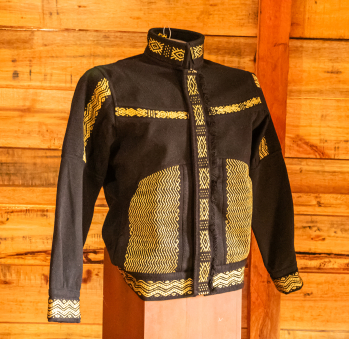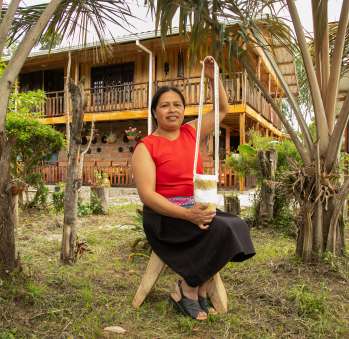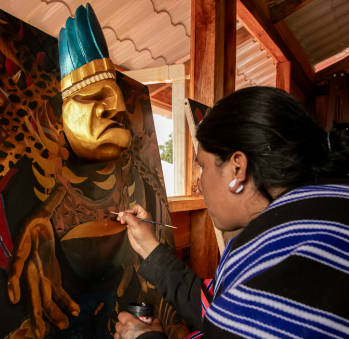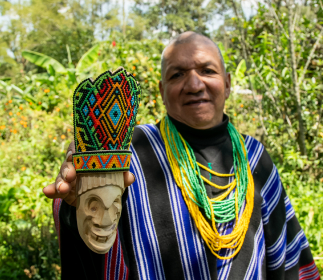Doris Jajoy Chindoy
Workshop: Casa Mujay
Craft: Tejeduría
Trail: Putumayo Route
Location: Sibundoy, Putumayo
Doris has her hopes set on her son Carlos Alberto. She says she’ll do everything possible for the boy to remain in love with his Kamentsá heritage. She wants him to experience what she did; even though she had to depart from the teachings of her grandparents about the value of life and harmony with nature, she always longed to return to that place where knowledge felt so close and coherent. She had to step away, first into the home of the ICBF, which provided food and care for children in the Sibundoy Valley in the 1980s, and later to a School run by nuns. Nevertheless, she never forgot those sweet childhood times spent next to Josefina and Crispín. For her, her first three years of life defined her joy and her pursuit of the indigenous happiness her grandparents instilled in her.
Daughter of a Kamentsá mother and an Inga father, preserving her people’s traditions has been her life’s mission. She’s an heir to the leadership of her grandfather Crispín, a renowned taita from Sibundoy, and of her mother Concepción, and she knows that obstacles are constant and that it’s very easy to lose connections, thus erasing the past and family memory. In her case, she experienced this in various ways. On her parents’ side, coming from different ethnic groups, they found in Spanish a means of communication, causing her to lose her mother tongue and strive to regain it later in the bilingual school she finally entered in her adolescence. But she also experienced detachment in her adult life. When she got married, she faced threats against her husband, a community leader who had been forcibly recruited by the guerrillas as a child, leading them to remain displaced from Sibundoy for 12 years.
Curiously, or perhaps inevitably, being far away strengthened her roots and awoke her childhood memories. She held onto her people’s traditions and was determined to learn to weave. It was her way to connect with her land, reminding her of her mother and aunt weaving chumbes, and delving into the symbolism of her Kamentsá people.
It would be many years later that she embarked on another mission: to rescue the knowledge of the elders, the “mamitas.” It took three years to persuade these teachers to sit down and work together with the aim of leaving a piece that would serve as a guide for the new generations. And she succeeded. Twelve teachers wove, for six months, a 28-meter-long sash where they poured all their feelings into Kamentsá symbols. They have managed to identify 118 symbols, although they have only been able to delve into 9 of them. This was almost a decade ago, and today only four of the “mamitas” survive.
Finally, Doris was able to return to Sibundoy, knowing she still has much to do. However, the flame that moves her is strong; it’s the memory of all those women she honors every time her threads undertake the challenge of telling a new story.
Craft


















Artisans along the way
Artisans along the way
No puede copiar contenido de esta página



































































